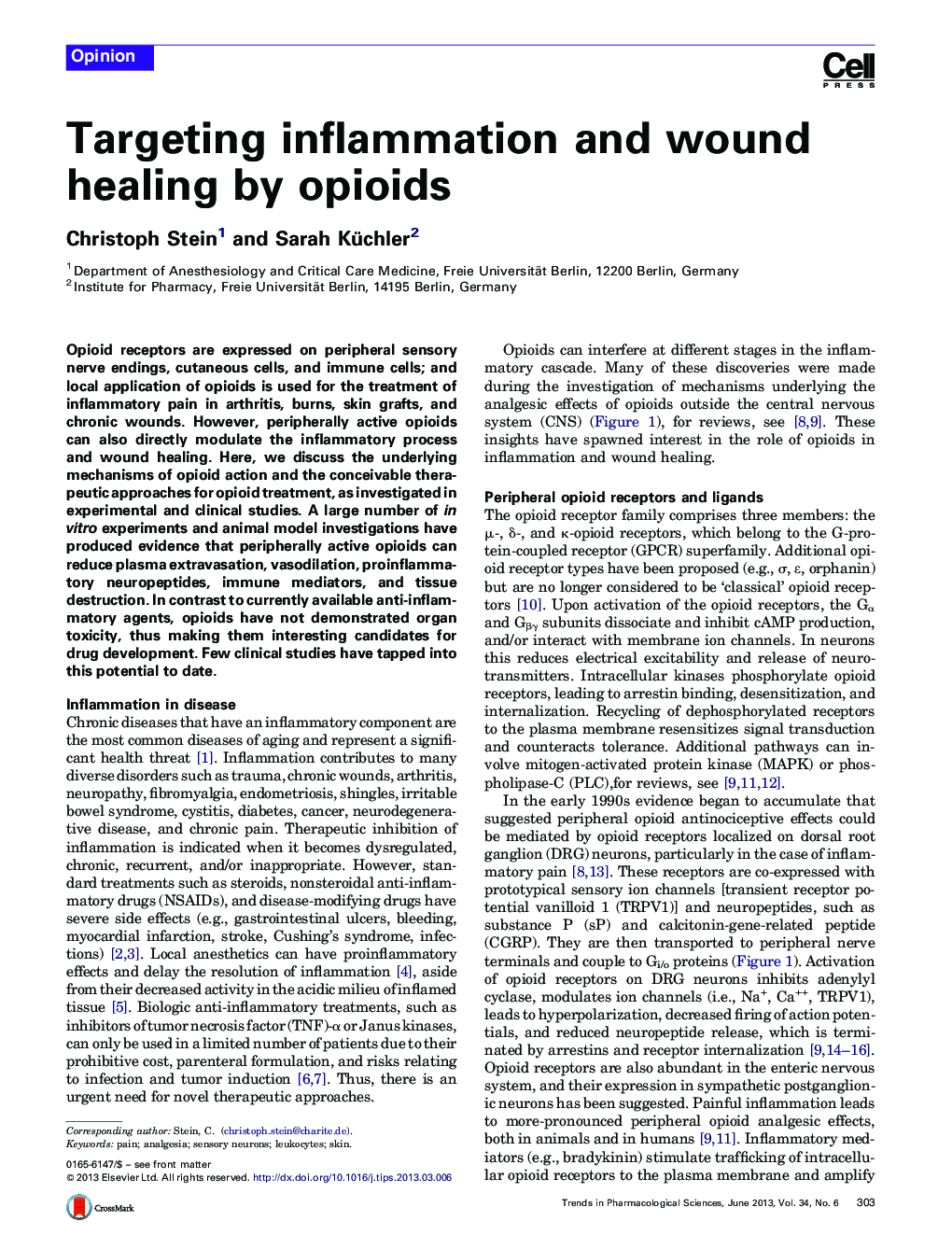| Article ID | Journal | Published Year | Pages | File Type |
|---|---|---|---|---|
| 2572762 | Trends in Pharmacological Sciences | 2013 | 10 Pages |
Opioid receptors are expressed on peripheral sensory nerve endings, cutaneous cells, and immune cells; and local application of opioids is used for the treatment of inflammatory pain in arthritis, burns, skin grafts, and chronic wounds. However, peripherally active opioids can also directly modulate the inflammatory process and wound healing. Here, we discuss the underlying mechanisms of opioid action and the conceivable therapeutic approaches for opioid treatment, as investigated in experimental and clinical studies. A large number of in vitro experiments and animal model investigations have produced evidence that peripherally active opioids can reduce plasma extravasation, vasodilation, proinflammatory neuropeptides, immune mediators, and tissue destruction. In contrast to currently available anti-inflammatory agents, opioids have not demonstrated organ toxicity, thus making them interesting candidates for drug development. Few clinical studies have tapped into this potential to date.
